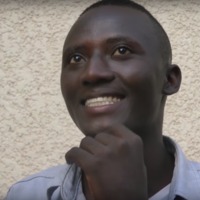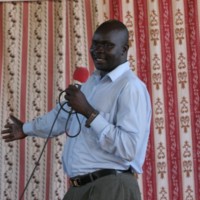
Jean-de-Dieu
According to the 2018 Global Slavery Index, there are approximately 408,000 people enslaved in Burundi. Amnesty International describes how military leaders have fuelled Burundi’s 10 year armed conflict by recruiting and abducting children. Poverty and years of armed conflict have made it easier for a whole generation of children to be drawn into the armed conflict. The Burundian armed forces as well as Burundian armed political groups1 have all recruited and used child soldiers in a variety of capacities - as porters, informants, “wives” and actual combatants.Jean-de-Dieu was forced to become a child soldier at the age of 14.

Anywar
Anywar was abducted in 1988 at age 14 to serve as a child soldier in the Lord's Resistance Army (LRA). Led by Joseph Kony, the LRA was fighting to overthrow Uganda’s secular government. The war in northern Uganda lasted from 1986 until 2006, during which time more than 35,000 boys and girls were enslaved by the LRA. In 1999, Ricky and his friends started Friends of Orphans (FRO), an organization which works to contribute to the empowerment, rehabilitation and reintegration of former child soldiers, abuductees, child mothers, orphans, and to combat the spread of HIV/AIDS.

Aida
Aida was recruited as a child soldier by a militia group in the Philippines at the age of 14 and then prevented from leaving. She was engaged in armed conflict for six months, one of hundreds of thousands of children who participate in armies and armed groups in more than 30 countries around the world. The problem is most critical in Africa, where up to 100,000 children are estimated to be involved in armed conflict. Child soldiers also exist in Afghanistan, Burma, India, Indonesia, Iran, Iraq, Israel and the Occupied Palestinian Territories, though international law sets 18 as the minimum age for all participation in hostilities. In the Philippines, where three major insurgent groups have fought the Philippine military since the 1960s, there are an estimated 2000 child soldiers. The Communist-oriented New People’s Army, established in 1968, began an intense recruitment of children in the 1990s. By 2000, some 25 percent of new recruits were children, and more than ten percent of its regular combatants are now under 18. Parents volunteer children to serve as combatants and camp guards. The Moro Islamic Liberation Front allows the training of children as young as 12. Parents volunteer their children, seeing it as an observation of Islamic teaching, and Muslim youth organizations recruit students from schools and colleges. The Abu Sayyaf (“Bearer of the Sword”), a Muslim separatist group which appeared in the late 1980s, uses Islamic religion to draw minors into the movement, for use as combatants, human shields, and hostages.

Abirami
Without parents to care for her, Abirami was forced to live at a relative’s house from a young age, where she suffered abuse and was later prevented from attending school so she could perform domestic duties for the family. She ran away to become a child soldier in Sri Lanka at the age of 13. Although Abirami joined the Liberation Tigers of Tamil Eelam (LTTE or Tamil Tigers) movement voluntarily, rather than being abducted like many other children, her recruitment at such a young age is against international law and now considered a war crime. Having now left the LTTE, Abirami discusses the possibilities of what she might do next and struggles to imagine her future.